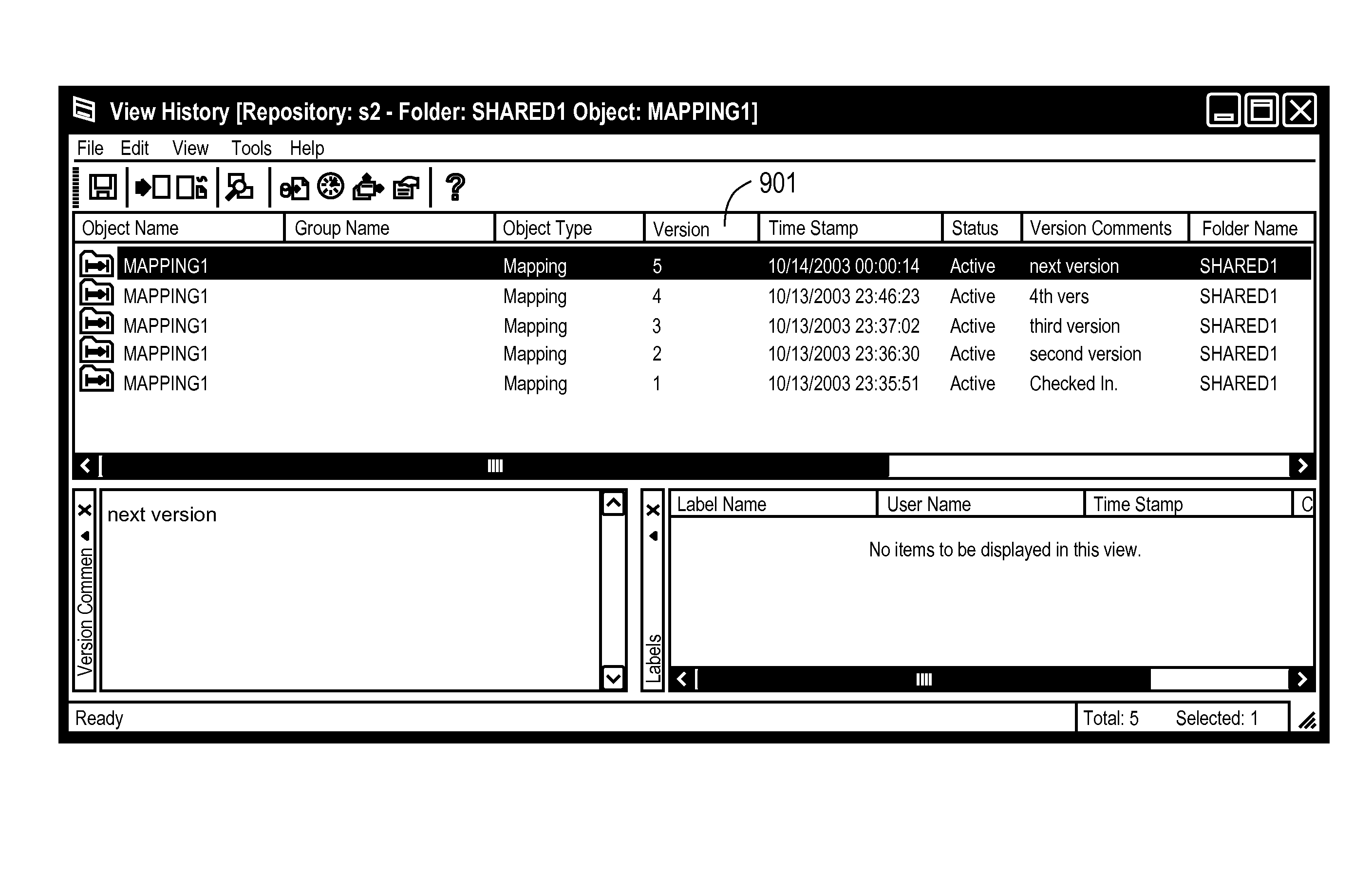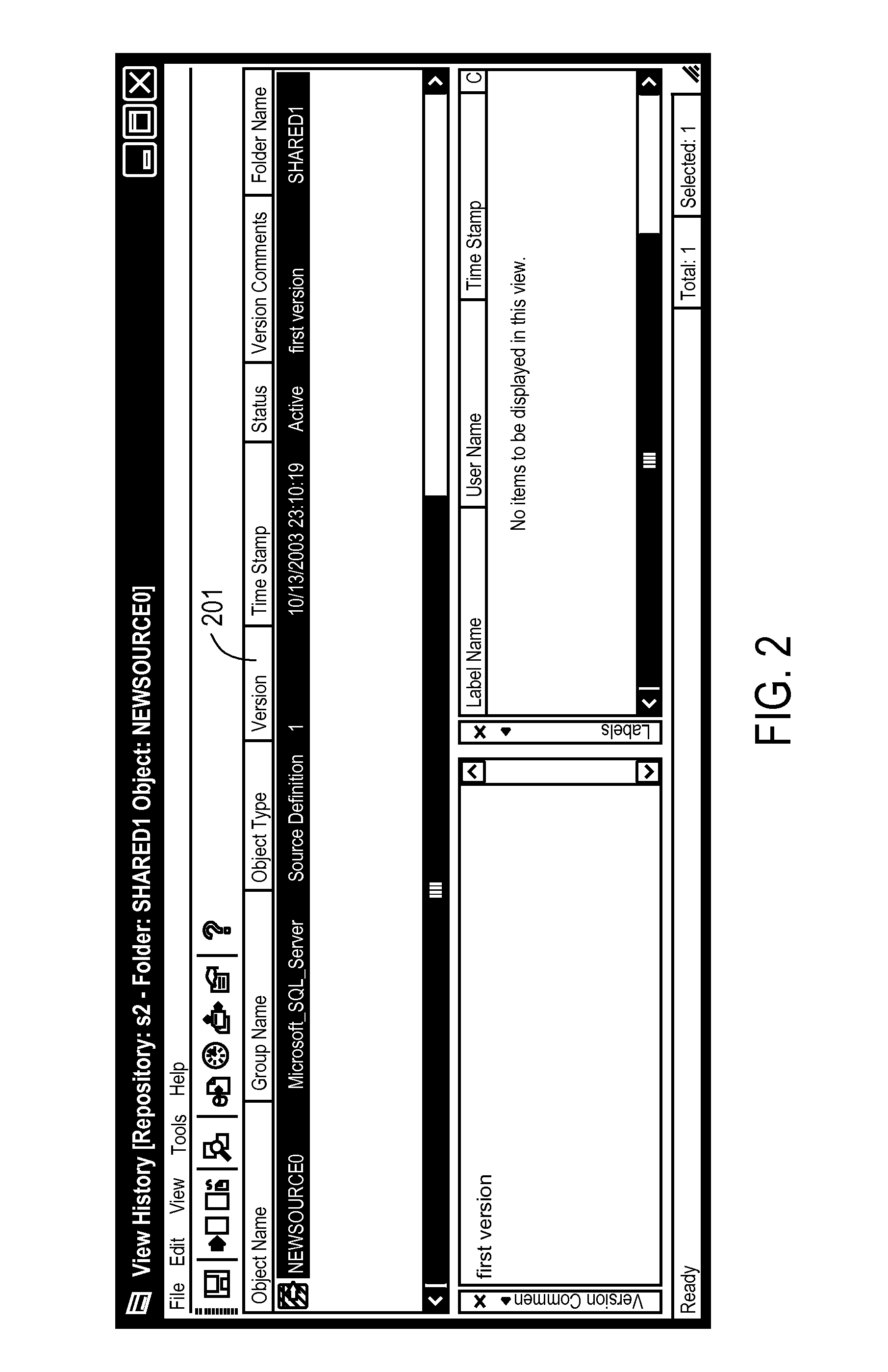Querying, versioning, and dynamic deployment of database objects
a database object and database technology, applied in the field of database management and data processing, can solve the problems of copying becoming outdated by new versions, and achieve the effect of simplifying the process of requesting and executing
- Summary
- Abstract
- Description
- Claims
- Application Information
AI Technical Summary
Benefits of technology
Problems solved by technology
Method used
Image
Examples
case b
[0114]With versioning, deployment is categorized into the following five cases of bulk copying:[0115]Case A. Copy an entire folder from a source repository to a target repository, including all versions for all versioned objects.[0116] Copy an entire folder from a source repository to a target repository, including only the latest version for all versioned objects.[0117]Case C. Replace an entire folder, copy all versions of all versioned objects and truncate all existing objects in the target.[0118]Case D. Replace an entire folder, copy only the latest version of all versioned objects and truncate all existing objects in the target.[0119]Case E. Replace a deployment group, copying only specific versions of objects specified in the group.
[0120]Case A: From the end user's perspective, the newly created folder in the target repository should be an exact duplicate of the original folder including all shortcut references. Note that objects that were marked as deleted in the source folder...
case c
[0122] Instead of simply truncating the folder to be replaced, the system checks the folder to determine if there is any object that has been checked out or has been locked to disallow deploy to replace. If so, then the deployment fails. As in Case B, the objects that were marked deleted or checked out in the source folder will not be deployed.
case d
[0123] Similar to Case C, except only the latest version of the versioned objects are copied, so when users view object history for these objects, they would see only one version, i.e., version number 1.
[0124]Case E: There is a user interface as part of the Repository Manager (FIG. 11) to let users add versioned objects to Deployment Groups. Objects in a group can come from multiple source folders, and they can deployed to replace distinct parts of target folders. Therefore, the system checks that the objects to be replaced are not checked out in the target folders, not locked to disallow replacement, and do not have a name conflict with other objects in the target repository. If any of the conditions mentioned is not satisfied, then the deployment fails and an error message is generated.
[0125]Objects in deployment should not be checked out, however, if the status of an object in the deployment group is locked, the system may copy this object to the target repository as locked or un...
PUM
 Login to View More
Login to View More Abstract
Description
Claims
Application Information
 Login to View More
Login to View More - R&D
- Intellectual Property
- Life Sciences
- Materials
- Tech Scout
- Unparalleled Data Quality
- Higher Quality Content
- 60% Fewer Hallucinations
Browse by: Latest US Patents, China's latest patents, Technical Efficacy Thesaurus, Application Domain, Technology Topic, Popular Technical Reports.
© 2025 PatSnap. All rights reserved.Legal|Privacy policy|Modern Slavery Act Transparency Statement|Sitemap|About US| Contact US: help@patsnap.com



